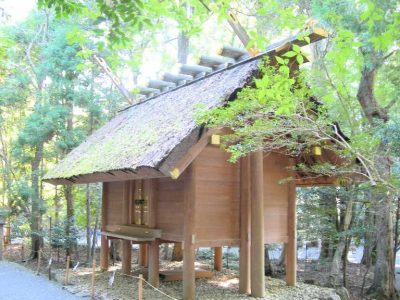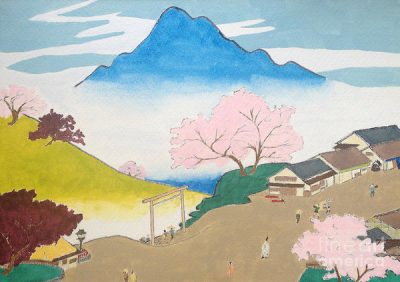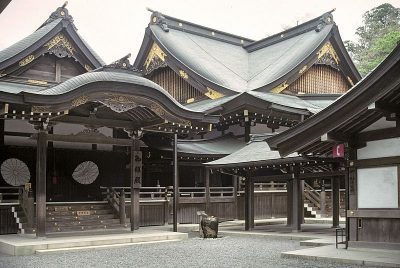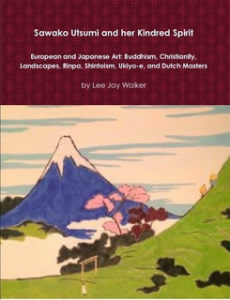Arakida Moritake (1473-1549) and Japanese poetry: Iio Sogi and Shintoism
Lee Jay Walker
Modern Tokyo Times

In time, the poet Arakida Moritake (1473-1549) became the symbolic head Shinto priest of the prestigious Inner Ise Shrine. Hence, with the Shinto faith meaning so much to Moritake, one can only imagine the inner-peace this provided. After all, the rigors of Japan in this period meant that culture, religious faith, philosophy, mythology, and other areas related to high culture, meant everything to the elites of the day.
It is known that Moritake admired the poetry of Iio Sogi, who was a Zen Buddhist monk. Sogi excelled in the field of poetry. Also, despite his humble start in life, this esteemed poet garnered a rich following in the upper chambers of old Japan. Therefore, the elites of literature, feudal lords, and powerful military leaders of pre-Edo Japan listened to the master of renga poetry during this period of Japanese history.

Hence, Moritake was not only fascinated by the richness of Sogi’s poetry but he equally admired his determined spirit. Equally important, the fusion of Buddhism and Shintoism through the prism of poetry – and other areas of high culture – highlights how diverse thought patterns met based on religious accommodation.
Sogi wrote:
The wind-shattered clouds
Are part of that unfinished dream
From which I awake
In the realm of high culture and faith, then Japan is blessed with many important places to visit. For example, the holy places of Ise, Kamakura, Koyasan, Kyoto, Nara, Nikko, and other delightful places. These holy places also link the world of high culture, faith, poetry, and philosophy. Equally, if you close your eyes, then the souls of poets and holy leaders in bygone days are still alive. This is based on people being inspired by architecture, Buddhism, Confucianism, contemplative gardens, high culture, literature, poetry, mythology, Shintoism, and other important areas.

Moritake famously wrote:
Coming to the end of our journey at the peak of
Mount Kajimi
The wind in the pines, the wind in the pines
In a past article, I state, “In many ways, these simplistic words flow like the seasons in nature and they amplify aspects of Shintoism. After all, nature, time, and Shinto shrines fuse and flow naturally based on the reality of this world outside of human interference. Therefore, the Shinto faith is all-encompassing and built natural bridges in this period of history between Buddhism, Confucianism, Daoism, and Shintoism.”

Overall, Moritake deeply cherished the poetry of Sogi and the richness of high culture in this period of Japanese history. Hence, the honor bestowed on Moritake – on becoming the head priest of Shintoism at the Inner Ise Shrine – flows naturally just like the poetry he wrote.
BELOW IS A NEW BOOK BASED ON THE ART OF SAWAKO UTSUMI
Book Review: Sawako Utsumi and her Kindred Spirit
European and Japanese Art: Buddhism, Christianity, Landscapes, Rinpa, Shintoism, Ukiyo-e, and Dutch Masters

http://www.lulu.com/shop/lee-jay-walker/sawako-utsumi-and-her-kindred-spirit/paperback/product-22830732.html – Please click on to order the book.
http://fineartamerica.com/profiles/sawako-utsumi.html – Sawako Utsumi

PLEASE SUPPORT MODERN TOKYO TIMES by DONATING
Modern Tokyo News is part of the Modern Tokyo Times group
DONATIONS to SUPPORT MODERN TOKYO TIMES – please pay PayPal and DONATE to sawakoart@gmail.com
http://moderntokyotimes.com Modern Tokyo Times – International News and Japan News
https://www.pinterest.co.uk/moderntokyotimes/ Modern Tokyo Times is now on PINTEREST
http://sawakoart.com – Sawako Utsumi personal website and Modern Tokyo Times artist
https://moderntokyonews.com Modern Tokyo News – Tokyo News and International News
PLEASE JOIN ON TWITTER
https://twitter.com/MTT_News Modern Tokyo Times